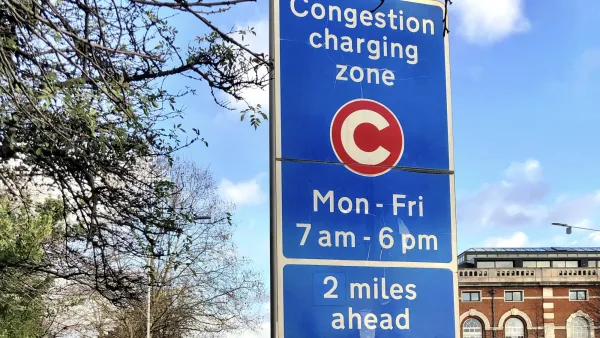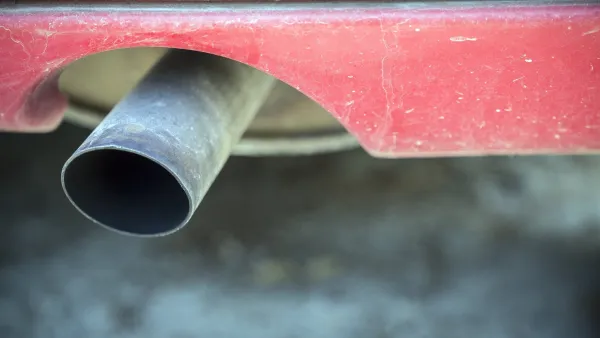It took an act of the Supreme Court for India to address the incredibly unhealthy levels of particulate matter in New Delhi. New rules are aimed at diesel cars, SUVs, and taxis. In Beijing, pollution triggered a red alert for only the second time.
To some extent, it's a tale of two of most heavily polluted capitals, with one grabbing the world's attention and implementing strategies to reduce emissions, while the other has gone to some degree unnoticed, and appears to be dragging its feet to reduce pollution.
"The Supreme Court of India ordered several transportation restrictions in the nation’s capital on (December 16) to help curb pollution, issuing a temporary ban on the registration of some diesel cars and setting a time frame for all taxis in the region to switch to compressed natural gas," writes Nida Najar for The New York Times.
The new restrictions are “a first step,” said Anumita Roychowdhury, the executive director of the Center for Science and Environment, [a public interest research and advocacy organisation based in New Delhi] who acknowledged that the number of sport utility vehicles running on diesel was lower than the number of smaller diesel cars, which are not subject to the restriction.
Nonetheless, the court ruling was called "landmark" by CSE, as their press release indicates:
With these orders Delhi takes a leap to cut down toxic diesel emissions from trucks and cars. Diesel vehicles contribute hugely to particulate matter and nitrogen oxides (NOx) that are rising in Delhi.
The press release also points to the disproportionate pollution generated by diesel cars:
New study by IIT Kanpur on air pollution sources in Delhi commissioned by Delhi government and discussed in the Supreme Court yesterday [Dec. 15] has shown that diesel cars that are a quarter of all cars in the city, are responsible for 60-70 per cent of PM2.5 from vehicular sources in different parts of Delhi.
Correspondent's notes: Both articles in The Economic Times below may be on the study referred to above:
- A Dec. 21 article about an IIT Kanpur study evaluates Delhi's current pollution mitigation strategies as they relate to auto restrictions "suggests use of eco-friendly vehicles in Delhi to reduce pollution."
- A Dec. 13 article "identified trucks and road dust as the largest contributors behind Delhi's polluted air pollution."
"The World Health Organization said last year that New Delhi had the most polluted air of the nearly 1,600 cities around the world that it had surveyed [in the period from 2008-2012]," writes Najar.
"At least 3000 people die prematurely every year in the city because of air pollution, according to a joint study by Boston-based Health Effects Institute and Delhi's Energy Resources Institute," wrote Bhuvan Bagg of Agence France-Presse in an article that appeared in The Sydney Morning Herald in April.
As for Beijing, as incredible as this may sound, "(n)o Chinese cities ranked in the top 20 most polluted cities, despite thick, gray smog filling its cities and millions of residents commuting behind surgical masks," wrote Madison Park for CNN in May, 2014 about the WHO report.
On Saturday, December 19, Justin Worland, reporter for TIME, wrote about Saturday's 'red alert,' only the second to be enacted "as unhealthy levels of smog in the city are expected to persist through Tuesday." Measures enacted during the first red alert on December 7 included, per our earlier post:
The vast majority of schools were closed for the day; construction sites were shut; only cars with even-numbered license plates were allowed on the roads during the day," write Julie Makinen and Jonathan Kaiman for the Los Angeles Times.
Worland updates a mortality study reported here in January, 2014: "China's Annual Air Pollution Death Toll: Half A Million People."
Recent research has shown that pollution in China kills more than 1.5 million people each year (4,400 each day), amounting to 17% of the nation’s annual deaths.
FULL STORY: India, Choking on Pollution, Restricts Vehicle Use in New Delhi

National Parks Layoffs Will Cause Communities to Lose Billions
Thousands of essential park workers were laid off this week, just before the busy spring break season.

Retro-silient?: America’s First “Eco-burb,” The Woodlands Turns 50
A master-planned community north of Houston offers lessons on green infrastructure and resilient design, but falls short of its founder’s lofty affordability and walkability goals.

Delivering for America Plan Will Downgrade Mail Service in at Least 49.5 Percent of Zip Codes
Republican and Democrat lawmakers criticize the plan for its disproportionate negative impact on rural communities.

Test News Post 1
This is a summary

Test News Headline 46
Test for the image on the front page.

Balancing Bombs and Butterflies: How the National Guard Protects a Rare Species
The National Guard at Fort Indiantown Gap uses GIS technology and land management strategies to balance military training with conservation efforts, ensuring the survival of the rare eastern regal fritillary butterfly.
Urban Design for Planners 1: Software Tools
This six-course series explores essential urban design concepts using open source software and equips planners with the tools they need to participate fully in the urban design process.
Planning for Universal Design
Learn the tools for implementing Universal Design in planning regulations.
EMC Planning Group, Inc.
Planetizen
Planetizen
Mpact (formerly Rail~Volution)
Great Falls Development Authority, Inc.
HUDs Office of Policy Development and Research
NYU Wagner Graduate School of Public Service




























